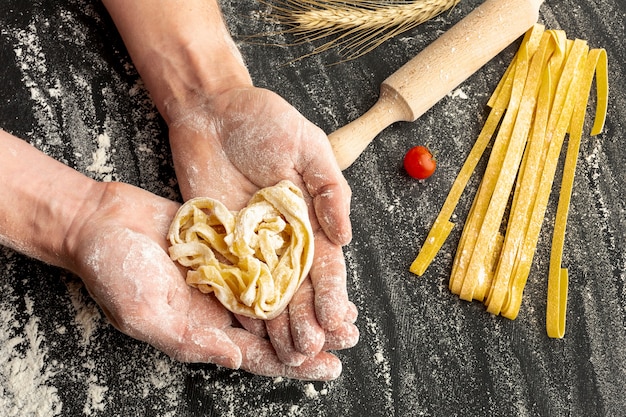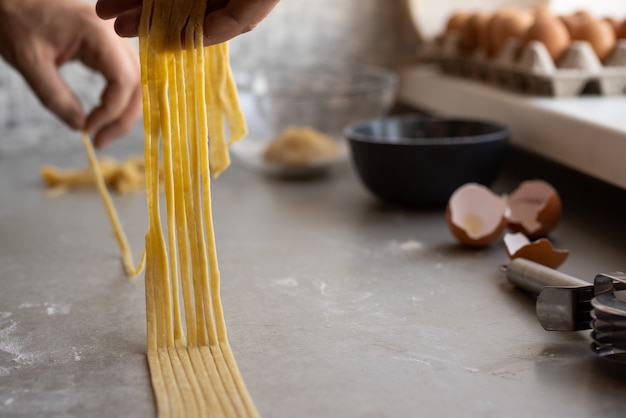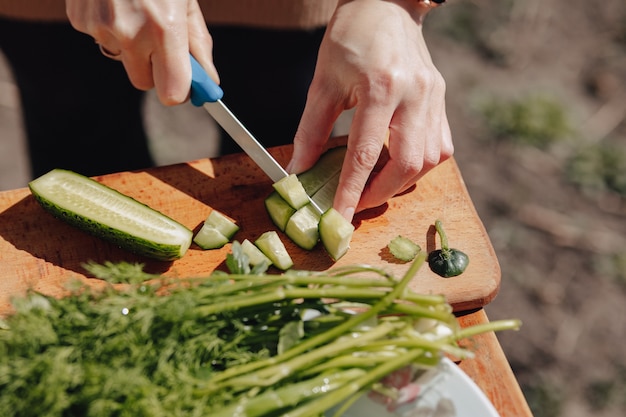Spaghetti – that iconic Italian dish that's been a comforting staple in kitchens around the world for centuries. I've been a spaghetti enthusiast since I was a kid, watching my mum whip up magic in the kitchen. But even with all those years under my belt, there's one question that always seems to pop up: How long do you actually cook spaghetti for? It seems like a simple question, right? But the answer, as with most things in life, isn't quite so straightforward. It all depends on a few key factors.
Part 1: The Spaghetti Symphony: Understanding the Basics

You see, spaghetti isn't just spaghetti. There's a whole world of pasta varieties out there, each with its own personality, texture, and yes, cooking time.
1.1 The Spaghetti Family: A Diverse Bunch
The most common spaghetti you'll find is made with durum wheat, that trusty workhorse of the pasta world. But then there's the whole wheat spaghetti, a heartier, more nutritious option. And let's not forget angel hair pasta, a delicate, almost ethereal spaghetti that cooks in a flash.
Each of these spaghetti varieties has its own unique texture and flavor, so knowing what you're working with is key to getting the perfect cook.
1.2 Thick and Thin: A Matter of Texture
You've got your thin spaghetti and your thick spaghetti, and this makes a difference, too. Think of it like this: the thicker the spaghetti, the more time it needs to cook through. It's like a marathon runner versus a sprinter – the thicker spaghetti needs more time to reach that al dente finish line.
1.3 Spaghetti Shapes: From Straight to Spiraled
Even the shape of your spaghetti matters. You've got your straight spaghetti, your twisted spaghetti, and even spaghetti that's shaped like loops. Those twists and loops have more surface area to cook, so they'll need a bit more time in the boiling water.
Part 2: Boiling Water: The Foundation of perfect spaghetti

Now, let's talk about boiling water. It's not just a matter of heating up the water – it's an essential part of the spaghetti cooking process. Boiling water helps the spaghetti cook evenly and prevents it from sticking together. Think of it like a spa for your spaghetti. The water needs to be bubbling furiously, like a pot of happy bubbles.
My grandma, bless her soul, always said to add a pinch of salt to the boiling water before adding the spaghetti. She claimed it made the pasta taste better and cook more evenly. I've always followed her advice, and it seems to work wonders, so I'm not about to question it.
Part 3: The Plunge: A Dramatic Moment in Pasta History

Once the water's bubbling happily, you're ready for the plunge. This is the moment where you introduce your spaghetti to the boiling water. I always like to imagine it's like a scene from a historical drama. You carefully lower the spaghetti into the boiling water, making sure to gently stir it to prevent it from sticking together. It's a dance of sorts, a ballet of spaghetti and boiling water.
Just make sure the water is still bubbling vigorously when you add the spaghetti. You don't want the temperature to drop too much, or you'll be waiting ages for your pasta to cook.
Part 4: The Spaghetti Clock: How Long to Cook
Now, we come to the question that's brought you here: how long do you cook spaghetti for? The answer, as you've probably guessed, depends on the type and thickness of your spaghetti.
But there's a general guideline to get you started. For regular spaghetti, you're looking at about 8-10 minutes.
But remember, these are just general guidelines. You should always check the package for specific cooking instructions. Every brand and type of spaghetti has its own quirks, so it's always best to play it safe.
Here's a handy table to help you navigate the spaghetti cooking time labyrinth:
| Type of Spaghetti | Cooking Time (minutes) |
|---|---|
| Regular Spaghetti | 8-10 |
| Whole Wheat Spaghetti | 10-12 |
| Angel Hair Pasta | 3-5 |
Part 5: The Al Dente Test: A Bite of Perfection
You’ll know your spaghetti is perfectly cooked when it’s al dente. It's like the Goldilocks of pasta: not too hard, not too soft. It should have a slight bite to it.
The best way to test for al dente is to simply taste a piece. Bite into it – it should be firm, but not mushy. If it’s still too hard, cook it for another minute or two. If it’s too soft, well, you've overcooked it, but don't fret. We'll discuss how to rescue overcooked spaghetti later.
Another way to tell if your spaghetti is al dente is to look at it. It should still be separate, not stuck together in a tangled mess. It should also have a slight sheen to it.
Part 6: Draining the Spaghetti: A Farewell to the Watery World
Once the spaghetti is al dente, it's time to bid farewell to the boiling water. You'll need a colander for this step, a trusty tool that acts as a bridge between the boiling water and your next culinary adventure. Gently pour the spaghetti into the colander, letting the water drain away.
Now, here's a little trick I learned from my mum. Give the spaghetti a quick rinse with cold water. This helps stop the cooking process and prevents the spaghetti from sticking together. It's like a quick shower for your pasta, refreshing and revitalizing.
And while you're at it, don't throw away that pasta water! It's a culinary secret weapon, full of starchy goodness that can enhance the flavor of your sauce. Save a cup or two and keep it handy.
Part 7: The Sauce: The Star of the Spaghetti Show
Spaghetti, as much as I love it, is nothing without a good sauce. A sauce that sings, a sauce that dances on your tongue. It's like the final act of the spaghetti play, the grand finale.
I've tried countless sauces over the years, from simple tomato sauces to more elaborate cream sauces. My personal favorite is a simple tomato sauce with garlic and basil – it's fresh, flavorful, and always a crowd-pleaser.
No matter what sauce you choose, make sure to toss the spaghetti with the sauce and serve it immediately. You don't want to let the spaghetti sit for too long, or it will start to get cold and lose its luster.
And don't forget the pasta water! Add a splash or two to the sauce to help it thicken and give it that extra touch of flavor.
Part 8: Leftovers and Reheating: A Second Act for Your Spaghetti
If you're lucky enough to have leftovers (which is often the case when I make spaghetti), you can store them in an airtight container in the refrigerator for up to three days.
When you're ready to reheat your spaghetti, you can either use the microwave or the stovetop. If you're using the microwave, just heat it for a minute or two, or until it's hot through. If you're using the stovetop, add a little bit of pasta water to the sauce to prevent it from drying out.
Leftover spaghetti is like a blank canvas for creativity. Try making spaghetti salad, spaghetti soup, or even spaghetti carbonara with your leftovers. The possibilities are endless!
Part 9: Tips and Tricks: Mastering the Spaghetti Game
9.1 Overcooked Spaghetti: A Culinary Rescue Mission
We've all been there – overcooked spaghetti. It's a culinary tragedy, but don't despair. There's still hope! You can try adding a little bit of pasta water to the sauce and then reheating it on the stovetop. The pasta water will help to rehydrate the spaghetti and make it less mushy. It's like a little bit of culinary magic.
9.2 Spaghetti Sticks Together: A Sticky Situation
If your spaghetti sticks together like glue, don't panic. Try tossing it with a little bit of olive oil. The olive oil will help to prevent the spaghetti from sticking, adding a touch of flavor and a silky smooth texture.
Part 10: FAQs: Solving the Spaghetti Mysteries
Q1: How much spaghetti should I cook per person?
A good rule of thumb is to cook about 1 cup of dry spaghetti per person. But if you're a real spaghetti enthusiast, you might want to cook a little bit more. There's nothing wrong with a little bit of leftover spaghetti.
Q2: Can I cook spaghetti in the microwave?
No, you can't cook spaghetti in the microwave. It needs to be cooked in a pot of boiling water on the stovetop. The microwave just isn't powerful enough to cook spaghetti evenly.
Q3: Can I cook spaghetti in a pressure cooker?
Yes, you can cook spaghetti in a pressure cooker. It will take less time than cooking it on the stovetop. But always check your pressure cooker's manual for specific instructions. Every pressure cooker is different, and you don't want to make a culinary mess.
Q4: What can I do with leftover spaghetti?
The world is your oyster when it comes to leftover spaghetti. You can make a spaghetti salad, a hearty spaghetti soup, or a creamy spaghetti carbonara. The possibilities are endless!
Q5: How long can I store cooked spaghetti in the refrigerator?
You can store cooked spaghetti in the refrigerator for up to three days. Just make sure you store it in an airtight container so it doesn't dry out or absorb any unwanted flavors from other foods in the fridge.
There you have it, my fellow spaghetti enthusiasts. The ultimate guide to spaghetti cooking. Now go forth and cook delicious, al dente spaghetti with confidence!
Everyone is watching

Perfect Rice Every Time: The Ultimate Guide to Cooking Rice
Cooking TipsAs a self-proclaimed foodie, I've always been a bit obsessed with rice. It's the foundation of countless cuisi...

Ultimate Guide to Cooking the Perfect Thanksgiving Turkey
Cooking TipsThanksgiving. Just the word conjures up images of overflowing tables laden with delicious food, the scent of r...

The Ultimate Guide to Cooking Asparagus: Tips, Techniques, and Recipes
Cooking TipsAsparagus. The mere mention of this spring delicacy conjures up images of vibrant green spears, crisp and burs...

Can You Cook Spaghetti with Gasoline? (The Shocking Truth)
Cooking TipsWe've all seen those crazy internet trends. You know, the ones that make you wonder, "Did someone actually try...

Asparagus Pan-Frying: The Ultimate Guide to Crispy, Flavorful Asparagus
Cooking TipsAh, asparagus. It's a harbinger of spring, a symbol of fresh starts, and a delicious addition to any meal. Bu...
